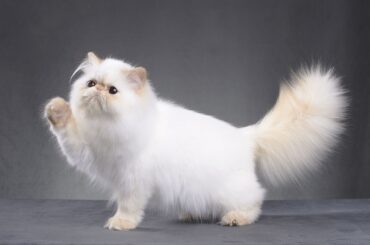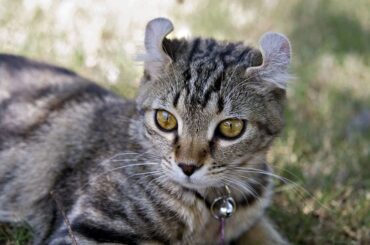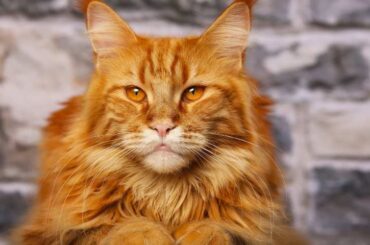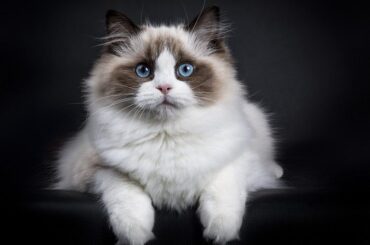The Bengal cat is a hybrid breed, created by cross-breeding the domestic cat with the Asian leopard cat. The name “Bengal” comes from the Asian leopard cat’s taxonomic name, Prionailurus bengalensis. The leopard cat looks very much like a domestic cat except for its larger eyes, which are set wide apart. Instead of having the usual round spots typical of most cats, it has more elongated spots in shades of brown and gold on a pale grayish-brown background.
This cat has a wild appearance that comes from its leopard cat ancestry. They can have spots, rosettes, arrowhead markings, or marbling in their coats. They are an energetic breed that needs much exercise and playtime.
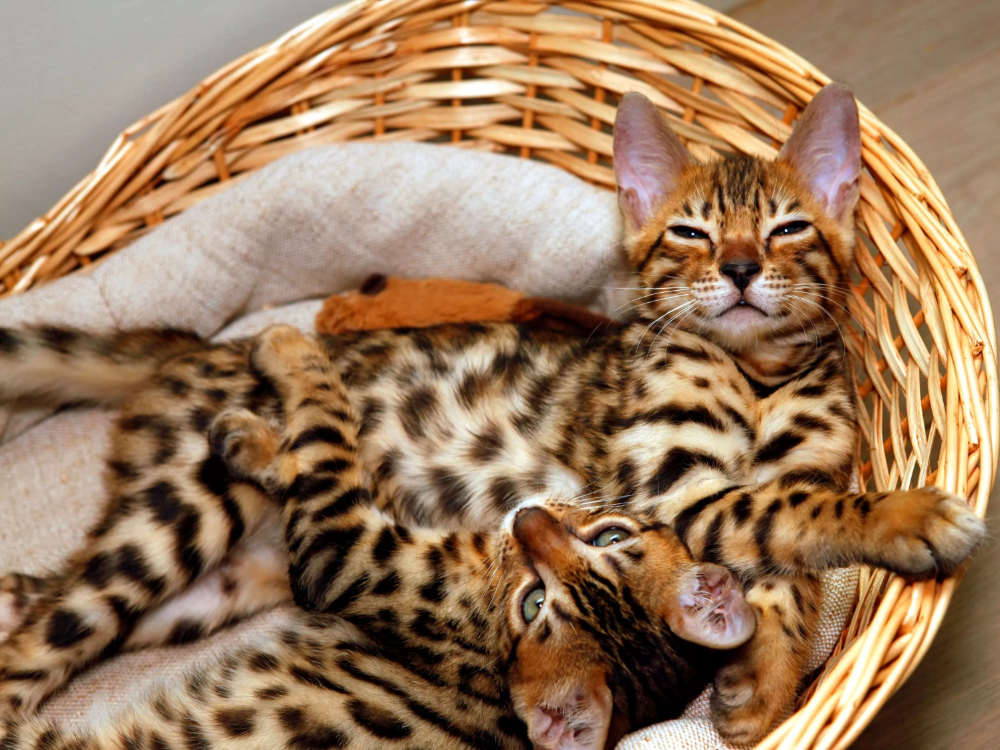
They are a breed of cat is named after the Asian leopard cat’s scientific name, Felis bengalensis. It was created through crosses between an Asian leopard cat — which in the 1950s and into the 1960s could be purchased at pet stores — and domestic shorthairs. Jean Mill, a breeder in California, was the first to make such a cross.
Mill had her leopard cat for several years, but she thought the cat looked lonely, so she got a male domestic cat to keep her company. When Mill least expected it, in 1965, her leopard cat produced a litter. Only one kitten survived—a female hybrid named Kin-Kin.
In the late 1960s, Jean Mill made the first known cross of an Asian leopard cat with a domestic cat (a black California tomcat). However, Bengals as a breed did not really begin in earnest until much later. In 1970, Mill resumed her breeding efforts and in 1975 she received a group of Bengal cats that had been bred for use in genetic testing at a certain university.
This was a very difficult decision for Mill, as he had much love for the spotted cats and their wildness. He could not stand to see them harmed anymore than they already were by humans. However, he also wanted to find a solution that would benefit both the leopard cat species and American cat lovers. It was later learned that four generations away from the leopard cat produced a cat with a more predictable temperament.
Today, Bengals are considered to be the same as domestic cats, and any Bengal purchased should have at least four generations of ancestors with no wild bloodlines. The first cat association to recognize this breed was The International Cat Association, which granted its experimental status in 1983, followed by full recognition in 1991.
Table of Contents
Body Structure
The Bengal cat is an average to large breed with spots. They are tall and lean. They weigh more than an average house cat because of their muscular bodies. They weigh eight to 15 pounds or more, they are sturdy and firm; never delicate. Very muscular, especially in the males; one of the most distinguishing features.
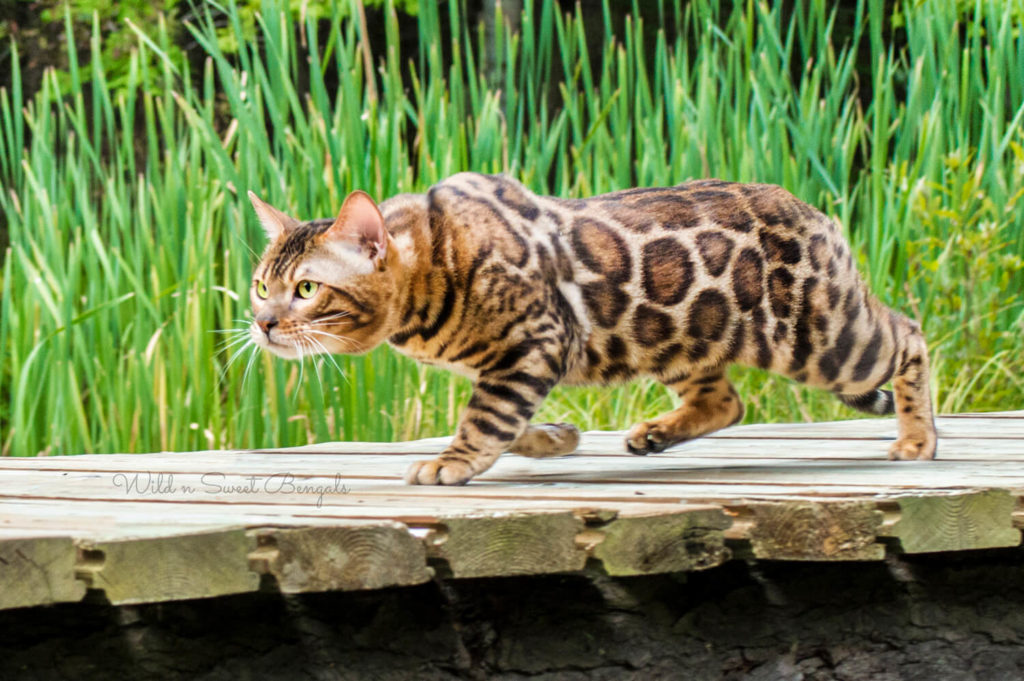
The cat head is often distinct from the domestic cat. A strong chin aligns with the tip of the nose in profile, and a full muzzle that follows the contour of the face in frontal view. The nose is large and wide, slightly puffed nose leather, and slightly offset ears.
They are a species of cats that come in different colors. The International Cat Association (TICA) recognizes several colors, including brown spotted, seal lynx point (snow), sepia, silver, and mink spotted tabby. Bengals are the only domestic breed of cat to have rosette markings. The most popular color is the brown spotted.
Behavior
Bengal cats are known to be smart, energetic, and playfully also curious; however, some rare cases may be quite lazy. Many Bengal owners say that their Bengals naturally retrieve items. Bengals often enjoy playing in the water. As an active, inquisitive cat that loves to be up high, most Bengals love playing, chasing, climbing, and investigating. In general, Bengal cats enjoy getting involved, they also have confidence.
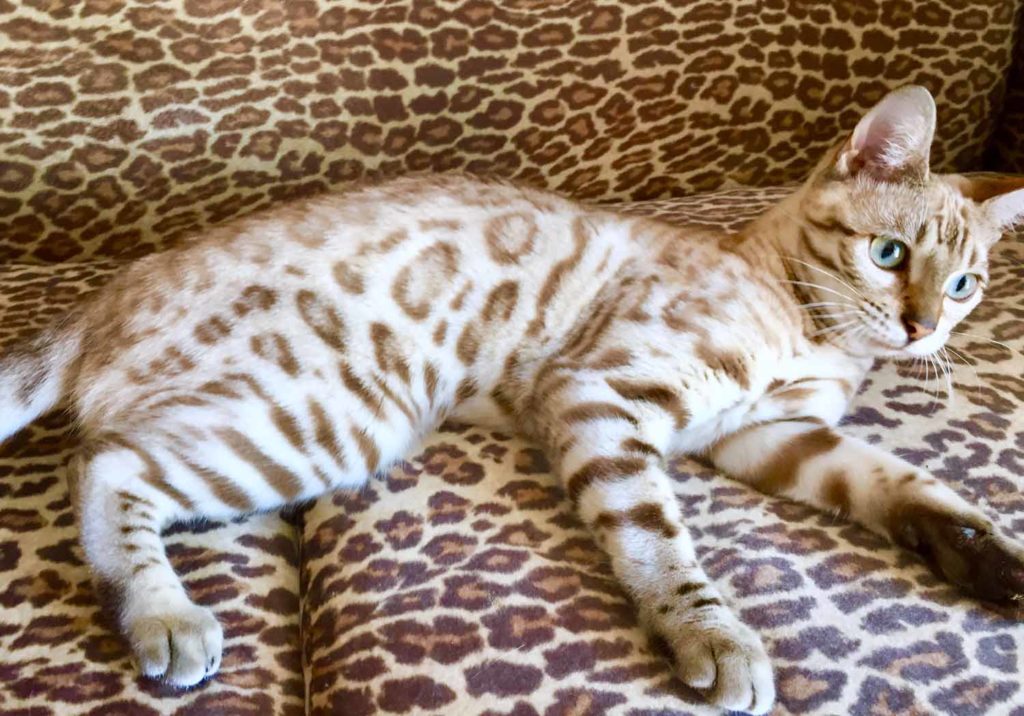
Health
Bengals are a breed that is considered to be hypoallergenic. They have lower levels of allergens, making them less likely to cause an allergic reaction in humans. They are known for being affected by several genetic diseases. One of these is Bengal progressive retinal atrophy, which affects the cat’s eyesight. The coat of the cat is short and thick, which makes it easy to care for. It should be combed weekly to remove dead hair and distribute skin oils. A bath is rarely necessary.

